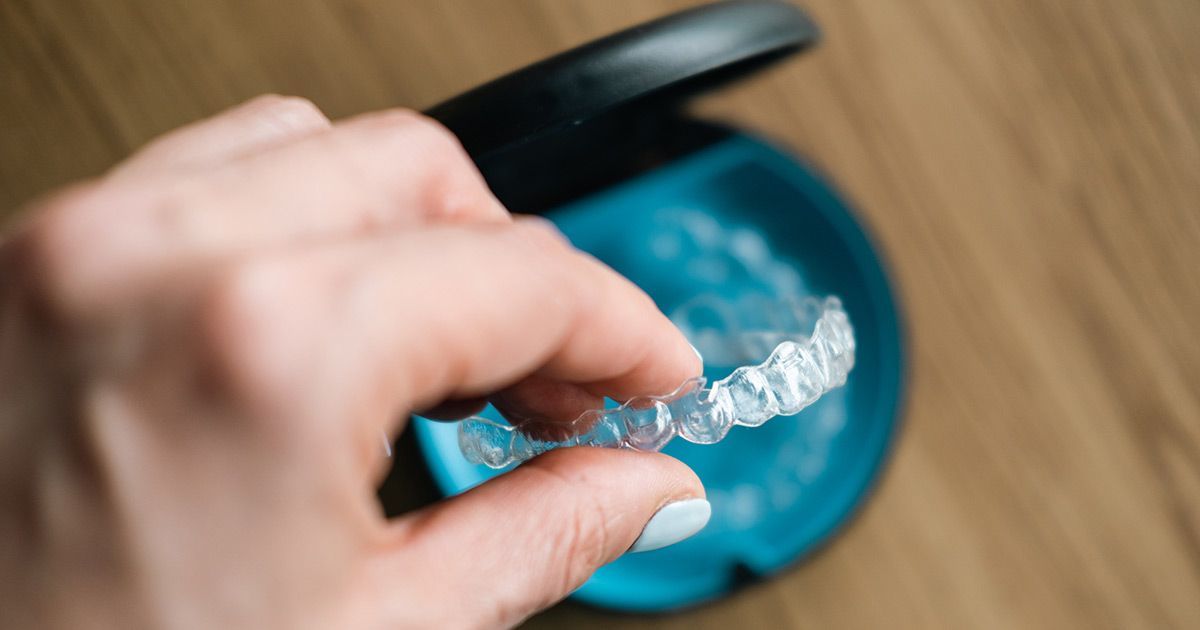
We Welcome New Patients, Emergencies, and Second Opinions
Button
Early Morning, Late Evening, and Weekend Appointments Available
Button
Dental Extraction: Procedure, Risk, and Recovery
Learn about the procedure, risks, and recovery process of a tooth extraction.
10 million wisdom teeth are removed in America every single day.
That's a lot of extracted teeth! And that's not to mention all the teeth removed for other reasons. Infections, decay, crowding, impacting, and cosmetic reasons can all require a tooth (or teeth) to be taken out.
The true number of teeth removed every day will be much higher.
It's likely that you'll need to have a tooth taken out at some point in your life. And, despite how frequently it's done, the procedure can remain a scary prospect. Especially when you consider that between 9 and 15% of Americans avoid going to the dentist due to anxiety.
Knowing exactly what to expect from a dental extraction might help. What's involved in this procedure? What risks are involved? What's the recovery process?
Keep reading to find out and have your fears and questions resolved.
Everything to Know about Dental Extraction
Here's everything you need to know about dental extraction. We'll start by explaining the procedure, before moving onto the risks involved, and finishing with the recovery process.
Procedure
Let's start with what to expect from a dental extraction.
There are actually two forms of extraction that occur: simple and surgical. The type you receive will depend on the particular issue with your teeth.
In both cases, the extraction of a single tooth should take between 20-40 minutes.
Now, without further ado, here's the procedure for both.
Simple Extraction
A simple extraction occurs when the tooth that needs removing is visible.
In such cases, your dentist will administer local anesthetic to numb the affected area. You'll be awake, but won't be able to feel anything apart from slight pressure during the procedure that follows. Thankfully there'll be no pain to worry about!
It isn't possible to just pull the tooth from your gum! This is because the root is encased in a 'socket' of bone, and held in place with a ligament.
As a result, the dentist will begin by loosening the tooth using a tool called an elevator. Essentially, the tooth is loosened through a back and forth rocking motion. This is sometimes referred to as expanding the socket.
Once loose, your tooth can be removed. The Dentist will accomplish this using a pair of forceps (dental 'pliers').
Surgical Extraction
Surgical extraction is undergone when your tooth is impacted.
This process generally requires you to be unconscious throughout. Consequently, it begins with the administration of a general anesthetic. However, some medical conditions mean general anesthetic cannot be used. Likewise, the operation may be more suited to remaining conscious.
In both of these cases, it's likely you'll receive a local and intravenous anesthetic instead. These will numb the area and calm you down throughout the surgery, respectively.
Once anesthetized, an incision will be made into your gum to remove the tooth. It may also be necessary to take out some bone in the area or to cut the tooth itself, in order to remove it.
Post-Extraction Process
The final part of the dental extraction procedure is similar for both simple and surgical extractions.
Following removal, the site will be 'closed'. First, the dentist may gently scrape the site to ensure nothing bad remains(such as infected tissue). It will then be washed with a saline solution and checked for anything that may remain (such as sharp bone).
Once the dentist's satisfied, you may receive stitches to stop the bleeding and facilitate healing. However, that's most likely after surgical removal.
Finally, the dentist might require you to bite down on folded gauze. This applies pressure to the site and stops any continued bleeding.
Risks
Now you know how a tooth is removed, we'll turn to the potential risks involved. Thankfully there aren't many. However, this is surgery, which means there's always a chance for something to go wrong.
Dry Socket
Dry socket is when a blood clot doesn't form over the wound. This can leave the bone exposed inside, which is problematic. Blood clots almost always form, but when they don't, your dentist will apply a sedative dressing over it instead. This protects the site and allows the clot to develop in time.
Pain
This one's less of a risk and more of a likelihood. You're likely to experience some discomfort when the anesthetic wears off. This is completely normal. After all, your mouth has been through a form of trauma.
However, be sure to consult with your dentist if the pain's severe and enduring. It may be a sign of something more severe(such as an infection).
Infection
Infection's another potential risk of dental extraction. Your dentist will ensure the site's clean and appropriately closed. However, infections do happen.
Seek medical support if you notice prolonged swelling, redness, pain puss in and/or around the extraction site or are experiencing nausea.
Death
This isn't to alarm you! Death from having a tooth extracted is unfathomably rare.
However, there's always a slight risk of death whenever a general anesthetic is used. That said, it amounts to approximately 1 in 100,000 cases . Like we mentioned- it's very uncommon.
Recovery
Finally, let's go through the recommended recovery process from your dental extraction.
It'll take a matter of a few days to feel better. Here's what you should do in that time.
In the immediate post-surgical phase, keep biting down on the gauze. This will stymie the bleeding and help the blood clot form.
In the ensuing period, be sure to take any medication as instructed by your dentist. Get lots of rest and only eat soft foods. Brush and floss as normal, but avoid the extraction site.
After a day or so you can also take 'salt baths'. With salt baths, you mix hot water with a small amount of salt, before rinsing and gargling it around your mouth.
Be sure to talk with your dentist if you experience any complications.
Time to Wrap Up
There you have it: the procedure, risk, and recovery involved with dental extraction.
Tooth extractions are undertaken by dental professionals for various reasons. And, whether your problem tooth's visible or impacted, it's a common procedure that's becoming ever more frequent.
Thankfully, the procedure's straight forward and risks are minimal. However, dry socket, pain, infection, and (in incredibly rare cases!) death, are all possibilities. The recovery process takes a few days, but by following the instructions above and getting lots of rest, you'll be back to normal in no time.
Now you know exactly what to expect from a dental extraction, we'd like to hear from you!
Have you ever had a tooth removed? Would it have helped to have read this piece beforehand? Let us know in the comments!
And be sure to contact us for all your dental requirements.
For Our New Patients
Are you a new patient at Broadway Cosmetic Dentistry PC? Make sure you fill out our new patient forms. Make sure that you print out and complete these forms before your first appointment. This will help us to speed up the new patient registration process.
Website designed and maintained by Xpress, INC
All Rights Reserved | Broadway Cosmetic Dentistry PC
+1 914-685-5650











